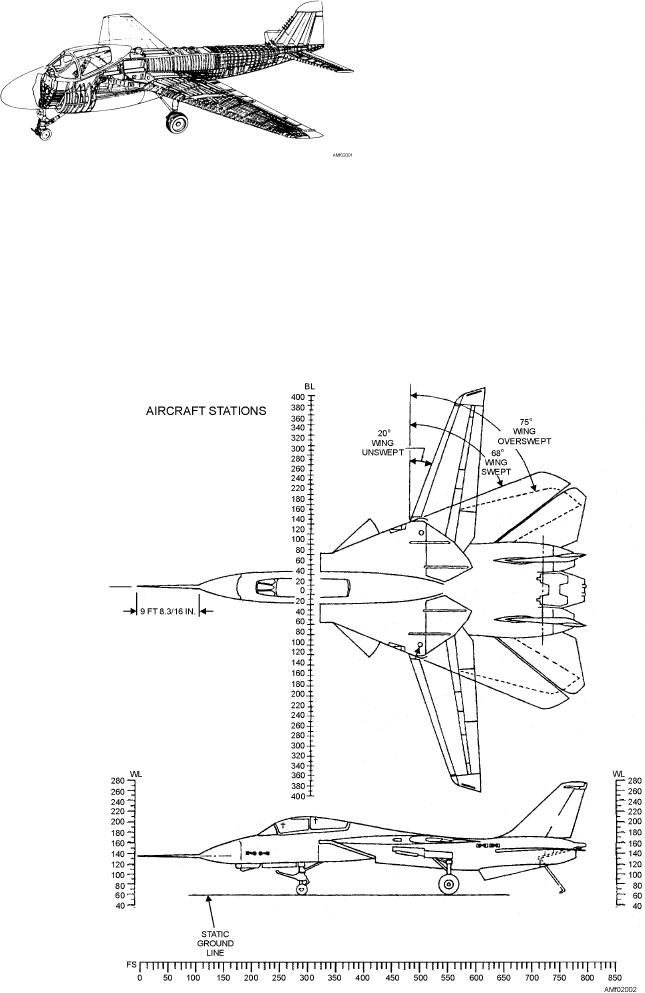
There are many advantages in the use of the
semimonocoque fuselage. The bulkheads, frames,
stringers, and longerons aid in the construction of a
streamlined fuselage. They also add to the strength and
rigidity of the structure. The main advantage of this
design is that it does not depend only on a few members
for strength and rigidity. All structural members aid in
the strength of the fuselage. This means that a
semimonocoque fuselage may withstand considerable
damage and still remain strong enough to hold together.
On fighters and other small aircraft, fuselages are
usually constructed in two or more sections. Larger
Figure 2-1.--Semimonocoque fuselage construction.
aircraft may be constructed in as many as six sections.
Various points on the fuselage are located by station
wings, engines, and stabilizers. Figure 2-1 shows a
number. A station on an aircraft may be described as a
modified form of the monocoque design used in
rib or frame number. Aircraft drawings use various
combat aircraft. The skin is attached to the longerons,
systems of station markings. For example, the
bulkheads, and other structural members and carries
centerline of the aircraft on one drawing may be taken
part of the load. Skin thickness varies with the loads
as the zero station. Objects to the right or left of center
carried and the stresses supported.
Figure 2-2.--Typical fuselage station diagram.
2-2

